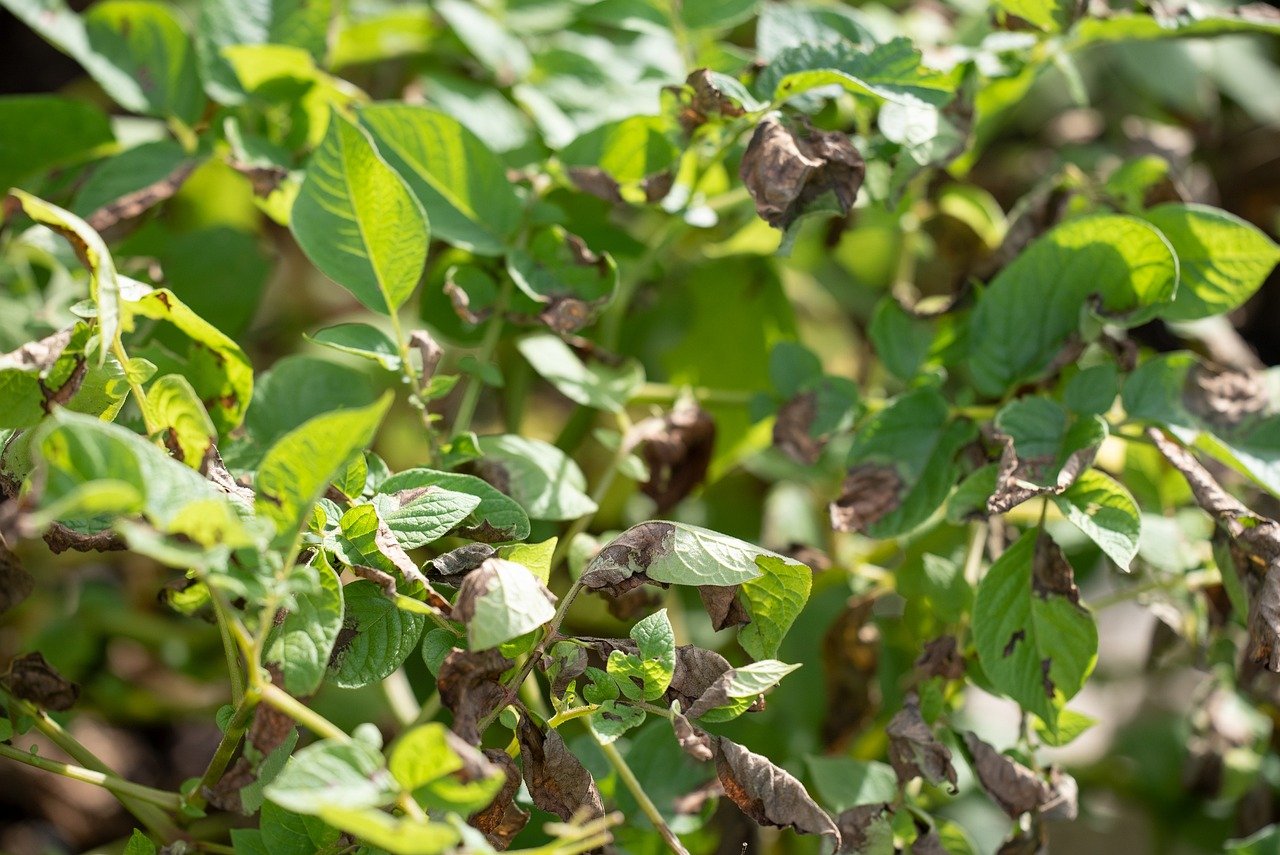
If you’re looking for a unique and efficient way to maximize the growth of your sweet potatoes, then vertical gardening may be the solution you’ve been searching for. With this innovative technique, you can grow sweet potatoes in a vertical fashion, allowing you to make the most out of your available space while still reaping a bountiful harvest. By utilizing vertical gardening, you’ll not only save precious ground space, but also create a visually appealing and practical display that will have your neighbors green with envy. Get ready to discover the secrets of how to achieve sweet potato success with vertical gardening.

Choosing the Right Variety of Sweet Potatoes
Importance of selecting the right variety
When it comes to growing sweet potatoes, choosing the right variety is essential for a successful harvest. Different varieties have different characteristics, including taste, texture, and growth habit. By selecting the right variety, you can ensure that you are growing sweet potatoes that meet your preferences and needs.
Differences between bush and vining varieties
Sweet potatoes come in both bush and vining varieties, and understanding the differences between the two is crucial in making an informed decision. Bush varieties tend to spread out more horizontally and are best suited for traditional garden beds or containers. On the other hand, vining varieties produce long vines that can be trained to grow vertically, making them perfect for vertical gardening.
Recommended vining varieties for vertical gardening
When it comes to vertical gardening, certain vining sweet potato varieties perform exceptionally well. Some popular choices include ‘Carolina Ruby,’ ‘Georgia Jet,’ and ‘Japanese Purple.’ These varieties have vigorous vine growth and are known for their ability to produce abundant harvests when grown vertically. Consider these varieties when planning your vertical sweet potato garden.
Preparing the Growing Area
Selecting a suitable location
Choosing the right location for your sweet potato garden is crucial for their success. Sweet potatoes thrive in full sun, so selecting a spot that receives at least six to eight hours of direct sunlight per day is essential. Additionally, make sure the location has well-draining soil, as sweet potatoes do not tolerate soggy conditions.
Clearing and preparing the soil
Once you have selected the ideal location, it’s time to prepare the soil. Remove any weeds or grass from the area and till the soil to a depth of eight to ten inches. Sweet potatoes prefer loose soil that allows for easy tuber development, so consider adding organic matter such as compost or aged manure to improve the soil’s texture and fertility.
Creating vertical support structures
When growing sweet potatoes vertically, it’s crucial to provide adequate support for the vines. You can create vertical support structures by installing trellises, stakes, or wire cages. These structures help train the vines to grow upwards, maximizing space utilization and improving air circulation, reducing the risk of disease. Plan and construct your vertical support structures before planting your sweet potato slips.

Starting Sweet Potato Slips
Understanding the concept of slips
Sweet potato slips are the small, rooted shoots that will eventually grow into mature sweet potato plants. They are essentially the starting point for your sweet potato garden. Growing slips is relatively easy and can be done using a few different methods. By understanding the concept of slips and their role in sweet potato propagation, you can ensure a successful garden.
Methods for starting slips
There are two primary methods for starting sweet potato slips: using a mature sweet potato or using vine cuttings. To start slips using a mature sweet potato, place the potato in a container of water, using toothpicks to suspend it partially submerged. Within a few weeks, the potato will produce slips that can be separated and planted. Alternatively, you can use vine cuttings by snipping off several inches of a healthy sweet potato vine and placing it in water until roots develop.
When to start slips for vertical gardening
Timing is essential when starting sweet potato slips, especially for vertical gardening. It is recommended to start slips about six to eight weeks before the last expected frost date in your area. This way, the slips will have enough time to develop and be ready for planting when the conditions are ideal. Adjust the timing based on your specific geographical location and climate.
Planting the Sweet Potato Slips
Preparing the slips for planting
Before planting your sweet potato slips, it’s important to prepare them properly. Trim the slips down to about six inches in length to encourage stronger root growth. Remove any bottom leaves and gently scrape the bottom half-inch of the stem to expose the cambium layer. This will promote rooting once the slips are planted in the soil.
Spacing and placement of slips
Proper spacing and placement of sweet potato slips are critical for maximizing yield and preventing overcrowding. Space the slips about 12 to 18 inches apart within the row, with rows spaced about three to four feet apart. This spacing allows each plant to have enough room to grow and ensures adequate airflow between the vines, reducing the risk of disease.
Techniques for planting in vertical gardens
When planting sweet potato slips in a vertical garden, there are a few techniques you can use to optimize space utilization. One popular method is to use containers or bags filled with a well-draining potting mix. Plant the slips in the containers, leaving enough space for the vines to grow and attach to the vertical support structure. Another technique involves planting the slips at the base of a trellis and training the vines to grow vertically using ties or twine.

Providing Adequate Water and Nutrients
Recommended watering practices
Sweet potatoes require consistent moisture levels throughout the growing season for optimal growth. Water deeply but infrequently, aiming for about one to two inches of water per week. However, be careful not to overwater, as soggy conditions can lead to root rot and other issues. Mulching around the plants can help retain soil moisture and reduce weed competition.
Importance of consistent moisture levels
Maintaining consistent moisture levels is crucial for sweet potato growth. Irregular watering can cause stress to the plants and lead to cracking or irregular tuber formation. It is especially important to provide adequate water during dry spells and hot summer months. Monitor the soil moisture regularly and adjust your watering schedule accordingly.
Choosing the right fertilizer for vertical sweet potato growth
To promote healthy growth and maximize yield, sweet potatoes benefit from regular fertilization. Choose a balanced organic fertilizer, such as a 10-10-10 or 14-14-14 blend, and apply according to the manufacturer’s instructions. Additionally, consider supplementing with a high-phosphorus fertilizer during the initial growth stages to encourage strong root development. Avoid excessive nitrogen fertilization, as it can result in excessive foliage growth at the expense of tuber production.
Managing Pests and Diseases
Common pests that affect sweet potatoes
Like any garden crop, sweet potatoes are susceptible to pests. Some common pests that can cause damage include sweet potato weevils, wireworms, and flea beetles. These pests can feed on the foliage, burrow into the tubers, or transmit diseases. Regular monitoring of your plants, proper hygiene practices, and timely intervention can help mitigate pest issues.
Preventive measures for pest control
Prevention is key when it comes to pest control in your sweet potato garden. Implementing good cultural practices, such as crop rotation and regular weed control, can help reduce pest populations. Additionally, consider using row covers or floating row covers during the early stages of growth to protect the plants from pests. If necessary, use organic insecticides or biological control methods as a last resort.
Identifying and treating common diseases
Sweet potatoes are prone to several diseases, including fungal and bacterial infections. Some common diseases that can affect sweet potatoes include fusarium wilt, black rot, and root knot nematodes. Early identification and prompt treatment are essential to prevent the spread and minimize damage. If you notice any signs of disease, such as wilting leaves, dark spots, or stunted growth, consult a local extension agent or plant pathologist for guidance on appropriate treatment methods.
Training and Pruning Vines
Importance of training and pruning
Training and pruning sweet potato vines in a vertical garden is crucial for maximizing growth and yield. By training the vines to grow vertically and removing excess foliage, you can improve airflow, reduce disease incidence, and increase sunlight penetration, resulting in healthier plants and bigger harvests.
Methods for training vines in vertical gardens
There are several methods you can use to train sweet potato vines in a vertical garden. One common technique is to guide the vines to grow upwards by tying them to the support structure using soft twine or clips. Another method involves using a trellis system with horizontal strings or wires that the vines can naturally climb. Whichever method you choose, be gentle when handling the vines to avoid damaging them.
Pruning techniques to maximize growth and yield
Pruning is an essential part of vertical sweet potato gardening. Regularly remove any damaged, diseased, or overcrowded leaves to improve airflow and prevent the spread of diseases. Additionally, consider removing some of the lateral shoots or suckers that emerge along the main vine to channel the plant’s energy into tuber production. Prune selectively, ensuring not to remove too much foliage that can negatively impact photosynthesis.
Supporting the Growing Vines
Using trellises and stakes
Trellises and stakes are essential support structures for vertical sweet potato gardening. Sturdy trellises made of wood or metal provide a framework for the vines to grow on. Install the trellises securely in the ground, ensuring they can withstand the weight of the growing vines and tubers. Alternatively, stakes can be used to provide individual support to each plant, particularly in container gardens.
Methods for securing vines
To ensure the vines stay securely attached to the support structures, use soft twine or plant ties to fasten the vines. Loosely tie the vines to prevent constriction while providing enough support for them to grow upwards. Regularly check the ties and adjust as necessary to accommodate the growing vines’ height and thickness.
Choosing appropriate support materials
When selecting materials for your support structures, consider factors such as durability, flexibility, and the size of the sweet potato vines. Opt for materials such as nylon trellis netting, wire mesh, or chicken wire that can effectively support the weight of the vines and withstand outdoor conditions. Avoid using materials that may cause injury or damage to the plants, such as sharp wires or abrasive materials.
Harvesting Sweet Potatoes
Indications of readiness for harvest
Knowing when to harvest your sweet potatoes is crucial for obtaining the best flavor and texture. Generally, sweet potatoes are ready to harvest when the leaves start to yellow and wither, usually around 90 to 120 days after planting. You can also gently dig around a plant and check for tuber size and skin color. Mature sweet potatoes have firm, well-developed tubers with smooth, healthy skin.
Harvesting techniques for vertical gardens
When it’s time to harvest your sweet potatoes in a vertical garden, carefully remove the vines from the support structure, ensuring you don’t damage the tubers. Gently dig around the base of the plant and lift the entire plant out of the ground. Shake off any excess soil and remove the tubers from the plant, being careful not to bruise or cut them.
Handling and storing harvested sweet potatoes
After harvesting, it’s important to handle sweet potatoes with care. Avoid dropping or roughly handling the tubers, as they are susceptible to damage. Cure the sweet potatoes by placing them in a warm, well-ventilated area for about two weeks, allowing the skins to toughen. After curing, store the sweet potatoes in a cool, dark location with a temperature around 55 to 60 degrees Fahrenheit and a relative humidity of 85 to 90 percent.
Tackling Common Challenges
Addressing overcrowding issues
Overcrowding is a common challenge in vertical sweet potato gardening. It can lead to stunted growth, poor airflow, and increased disease susceptibility. To address overcrowding, ensure proper spacing between plants and remove any excess shoots or suckers that may compete for resources. Regularly monitor your plants for signs of overcrowding and take appropriate action to maintain optimal plant health.
Preventing vine damage from wind or weight
Growing sweet potatoes vertically exposes the vines to potential damage from wind or the weight of the tubers. To prevent vine damage, ensure that your support structures are sturdy and securely anchored in the ground. Consider installing windbreaks or providing additional support during strong winds or storms. Regularly inspect the vines and support structures for any signs of stress or damage and take prompt action to mitigate the issue.
Dealing with excessive foliage and shading
While foliage is essential for photosynthesis and tuber development, excessive foliage can lead to shading and poor airflow, increasing the risk of disease. Regularly thin and prune the foliage to maintain a balance between leaf growth and tuber production. Remove any damaged or excessive leaves, particularly those that are blocking sunlight from reaching the lower parts of the plant. This will help maximize light penetration and promote healthier growth.
By following these comprehensive guidelines on choosing the right variety, preparing the growing area, starting sweet potato slips, planting, providing adequate water and nutrients, managing pests and diseases, training and pruning vines, supporting the growing vines, harvesting, and tackling common challenges, you can successfully grow sweet potatoes vertically. With proper care and attention, your vertical sweet potato garden will yield a bountiful harvest and be a delightful addition to your gardening endeavors. Happy gardening!





